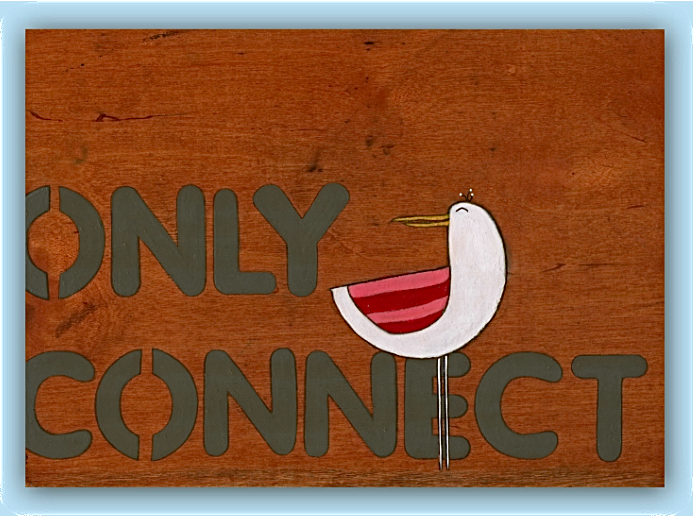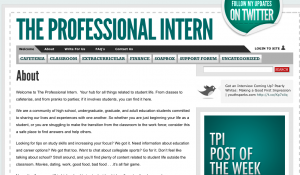Exciting things are happening at our school. Big changes. Changing roles. I can feel a big shift on the horizon, and I am lucky enough to be part of a team involved with reshaping how our school views not only technology, but what our school should look like as a learning community in general. For the last few months, we have been busy self-examining what it is we want from IT, but more importantly we have been looking closely at what kind of institution we hope to be in the near future. After all the discussions and meetings, we came up with a draft proposal for our new vision, a statement and subsequent document that would guide the direction of our school. Because it is still in draft form, I will not share it here.
We have identified a few key first steps, but know that we must have a larger more encompassing vision of who we are. Nonetheless at this point, I was asked to present some of the major ideas to our staff in hopes that it would excite them to become more involved and offer their input. Given that task last Wednesday, I hunkered down and got to work!
I will stop here and share the presentation, but if you are interested in my reflection on the process continue reading after the clip. Unfortunately, no one at our school was switched on enough to record it live, so I added some music and did a narration at home. Enjoy:
I am proud of it. Let me get that out there first. Some comments from people around school
That was like a Tedtalk!
That’s as good as any professional presentation I have ever seen.
Loved how you told it like a story.
Great script. You really seemed to know what you were talking about.
Like I said I am proud of it. I worked hard. I learned a lot and it shows. It is this process of working hard, stumbling, learning, sweating, and growing about which I want to talk about further in this post. As I mentioned in the clip, I had never really worked with Keynote before, and all told I must have spent two or three hours a night for about four nights putting this together. That is roughly twelve hours of time on the machine, not to mention the many hours I stayed up at night conceptualizing and thinking about how it would all look!
I can already see the heads shaking, “TWELVE hours on a presentation? Who has that kind of time?” Most teachers have too much on their plate to sit home at night and go through every single build in and build out of a Keynote, or to practice layering slides, or to come up with work-arounds for unforeseeable problems. Most teachers want someone to come in and show them what to do. I see this as a fundamental problem with the concept of teacher training versus professional development.
Learning takes time. It takes energy. Passion. Determination and desire. And most importantly it takes time. Unfortunately time is the one thing teachers have little of, but if we, as professionals really want to learn new things we have to make the time, or demand from our institutions not only to set expectations, but to give us time to learn, grow, play. There are no easy fixes. I am not saying that every teachers needs to sit at home every night and agonize over the perfection of every slide for a presentation, but if we are truly serious about learning how technology can help our teaching, we must make the time to learn something. We must set goals and find people who can help us grow. We can no longer expect to have others show us what buttons to push or what tools to use. I see teachers determining what they want to learn and my job is to help them get there. I am a firm believer in the concept that we learn tech tools to help us learn other things. For example, I did not spend twelve hours learning how to use Keynote. I spent that time learning how to use Keynote to give a presentation- how to tell a story. Next I will spend twelve more hours presenting a Pecha Kucha for Learning 2.011. Which brings me to my next point: the coaching model.
I have been so lucky this year to be working with an amazing grassroots team of teachers determined to push our school into cutting edge territory. We have an extremely supportive and excited administrative team, and we are doing some great things well. I mentioned some of the changes in the presentation, but we are also rethinking the role of the tech facilitator and looking toward a more mentor/coach style of developing teacher confidence. I am sure I will write much more on that soon, but for now let me say that I am learning everyday about what it means to work with others and help them activate and become excited by their learning.
In closing, I wrote this post to share the fruits of not only mine, but our whole team’s labor, with you-our fellow learners, in hopes that it might prove useful to you. I will also share it with our staff in hopes that perhaps it can be a starting point for a bigger conversation about what it means to admit that we are all learners and what to do once we have admitted that.
If you are a member of staff, please take the time to share some thoughts. Remember the point is not all accolades and back patting. I’ve already mentioned that I am proud of what I created. The point is to start conversations and share ideas. What do you think about all of this? What stuck out about the vision? What excites you? What scares you?Let’s begin to have these discussions out here on the open web. Leave a comment. Take the first step.
Feel free to answer these questions even if you are not at our school and are reading and watching from some place else.





